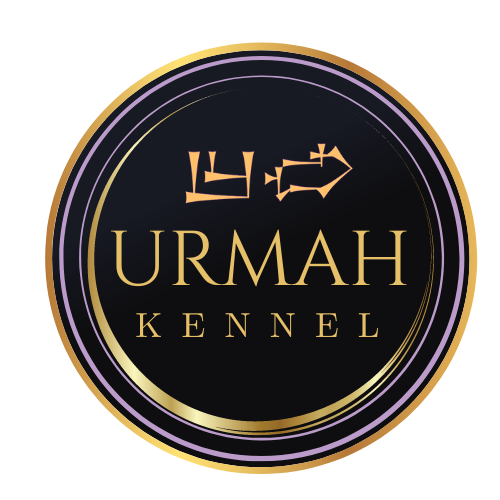f.a.q.
You have questions. wE have answers.
Owning a livestock guardian dog (LGD) is quite an experience that involves understanding their behaviors and requirements. Below is a customized set of asked questions tailored for new LGD owners;
Livestock guardian dogs (LGDs) are bred to protect livestock from predators. Unlike herding dogs, LGDs remain with the flock to provide defense. Some popular breeds include the Turkish Boz Sheperd, Kangal, Malakli, Great Pyrenees, Anatolian Shepherd, and Maremma Sheepdog.
Although LGDs can be family companions, their primary instinct is guarding. Without a designated task, they might not adjust well to an urban lifestyle. Socialization and training play roles if they are intended to be part of a family.
LGDs utilize their presence barking and, if needed, force to discourage predators. They are recognized for their instincts and capacity to operate independently.
LGDs thrive best in settings where they can patrol and safeguard their territory. They require space to express their instincts, so typically, 2 acres or more is sufficient.
It is advisable to have a sturdy fence that’s at least 5 to 6 feet tall to ensure that LGDs stay within your property and keep potential predators out. Electric fencing can also be an option. LGDs tend to wander if not properly confined.
Training LGDs primarily focuses on obedience and socialization during their developmental stages. Early introduction to the animals they will guard helps them form bonds with those animals. The training should emphasize their natural guarding instincts while ensuring they respond well to commands.
If raised together from an age, LGDs can get along well with children and other pets. However, due to their size and protective nature, it’s important to supervise interactions with children and animals to prevent harm.
While generally healthy, LGDs might be susceptible to conditions such as hip dysplasia, bloat, and certain genetic ailments. Regular veterinary checkups and a balanced diet are crucial for ensuring the well-being of LGDs.
Most LGDs have double fur coats that help them endure weather, but in hot climates, they need shade and access to water to prevent overheating.
Socialization plays a role. Introduce your LGD to people in controlled settings to show them that not all strangers pose a threat. Training them to respond to commands like stopping barking or sitting can also help them manage their behavior around guests.
LGDs should be fed a diet that fits their age, size, and energy requirements. Quality commercial dog food should be provided, or a diet plan devised with the guidance of a veterinarian. Avoiding overfeeding can prevent obesity and other health issues.
Apart from ensuring space for exercise, engage your LGD in activities that satisfy their guarding instincts. Regular vet visits, a nutritious diet, and preventive care are vital for their health.
Livestock guardian dogs can get along with other dogs if they are introduced properly and socialized from an early age. However, their dominant nature requires handling and socialization to avoid conflicts with dogs of the same gender.
On average, livestock guardian dogs live 10 to 12 years, depending on the breed. Providing care, nutrition, and regular veterinary visits can help ensure their healthy lives.
On average, livestock guardian dogs live 10 to 12 years, depending on the breed. Providing care, nutrition, and regular veterinary visits can help ensure their healthy lives.
f.a.q.
You have questions. wE have answers.
This FAQ aims to act as an essential resource for current dog owners and individuals pondering the idea of welcoming a dog into their lives. Nonetheless, considering each dog’s instincts is crucial, and considering the advice of a breed expert is advisable. Furthermore, seeking the expertise of professionals whenever necessary is recommended.
Before deciding to adopt a dog, it’s important to consider how it fits with your routine, living situation, financial capabilities, and time availability. Dogs need your time, resources, and commitment for their lifespan spanning over a decade. Consider factors such as the dog’s size, exercise requirements, grooming needs, and any breed-specific health concerns.
When choosing the breed for you it’s crucial to match the dogs characteristics with your lifestyle and living environment. Research different breeds to understand their energy levels, size considerations, grooming demands and temperamental traits.
The feeding schedule for dogs varies based on factors like age, size and overall health condition. Puppies usually need three to four meals daily while most adult dogs are typically fine with one to two meals. It’s always wise to seek advice from your veterinarian regarding the feeding routine and dietary choices for your companion.
Core vaccinations are essential to protect against rabies, distemper virus, parvovirus infection, adenovirus, and parainfluenza virus. Your veterinarian might suggest vaccinations based on where you live, your lifestyle, and your dog’s overall health.
Start with the fundamental obedience commands like sit, stay, come, and lie down. Use reinforcement methods such as treats and praise. Consistency and patience are crucial. Consider joining a training class or seeking assistance from a trainer.
Regular veterinary check-ups help prevent disease and detect health concerns early. Some flea and tick preventions require a yearly prescription. It is always best to find a trusted veterinarian and follow their recommendation. Nowadays, we have access to online veterinarians who may be beneficial to your situation.
Consult your veterinarian to develop a weight management plan for your dog. This plan may involve adjustments, portion control, and increased physical activity. It’s important to avoid giving treats and human food as these can contribute to weight gain.
Expose your dog to people, animals, environments, and situations from an age in a positive manner while ensuring not to overwhelm them. Socialization classes and dog parks allow dogs to interact in a controlled environment.
Expose your dog to people, animals, environments, and situations from an age in a positive manner while ensuring not to overwhelm them. Socialization classes and dog parks allow dogs to interact in a controlled environment.
f.a.q.
You have questions. wE have answers.
This FAQ answers questions about the Giant Breeds. Being the companion to a giant breed dog is an enriching experience that entails certain responsibilities. Understanding and meeting their particular needs guarantees a joyful and healthy existence for your magnificent giant.
Typically, a “giant breed” dog is one that weighs upwards of 100 pounds as an adult. This category encompasses breeds such as Great Danes, Mastiffs, Saint Bernards, and Irish Wolfhounds, all of which are not only large in stature but also generous in heart. This category includes all of the Livestock Guardian dogs found in modern day Turkey such as the Kangal, Anatolian Shepherd, Malakli, Turkish Boz Shepherd, Akbash, Karadeniz Mountain dog. Let’s not forget about the Central Asian dog Alabai, or also known as the Central Asian Shepherd, to name a few.
Although giant breeds can adjust to different housing conditions, they thrive with ample room to roam. Ideally, they would live in a house with a spacious, secure backyard. The Great Dane has different requirements than that of a Malakli. The Turkish Boz is more versatile than a Kangal. Another thing to consider is the temperament of the dog breed and even the individual dog. Some dogs want to live primarily outside, while others prefer to primarily live inside. Before choosing a breed, consult with a breeder to determine if the breed will suit your living situation.
Nourishing a giant breed demands a specialized diet to foster bone development and maintain overall wellness. They need premium dog food for large breeds to avert issues tied to their rapid growth. The right amount of food and the frequency of meals will depend on the dog’s age, size, and how active they are. It’s best to consult a veterinarian to design a feeding regimen specific to your pet.
Contrary to what one might expect, most giant breed dogs don’t need as much physical activity as medium or high-energy breeds do. Regular walks coupled with some time to freely move about in a protected space are often enough. However, it’s important to carefully manage their activity levels, especially during their puppy and senior years, to avoid joint damage. The dog’s individual temperament plays a role in determining whether it will exercise. Most giant breed dogs do not make good running partners.
Giant breed dogs tend to be susceptible to particular health issues, including hip dysplasia, bloat (gastric torsion), and cardiac conditions. Scheduling frequent veterinary visits, providing a proper diet, and ensuring they remain at a healthy weight can mitigate these risks.
It’s crucial to begin training while they are small enough to handle easily. Positive reinforcement methods and consistency with commands are key. Given their impressive size, it’s important to instill good manners and leash discipline for everyone’s safety. At minimum, giant breed dogs should have some level of obedience training.
To prevent fearfulness and aggression, socializing early with positive exposure to various people, animals, scenarios, and situations is crucial. Positive and gentle experiences during their early months can pave the way for a balanced and friendly adult dog.
It’s important to puppy-proof your home, paying extra attention to the robustness of household items. Since giant breeds can easily access counter surfaces, keeping potential dangers out of reach is key. Also, due to their strength and size, investing in durable, suitably sized toys and bedding is essential.
Grooming necessities can vary depending on the breed. Many need regular brushing to control shedding and maintain coat health. It’s crucial to keep their nails trimmed to avoid pain and problems with walking. Taking care of their teeth and ears is equally important.
During the growth phase, it is advised to limit excessive running and avoid hard surfaces. Ensure your dog’s body weight stays at a healthy level to reduce stress on its joints. Per your veterinarians ‘ recommendations, supplements like glucosamine and chondroitin can support joint wellness.

